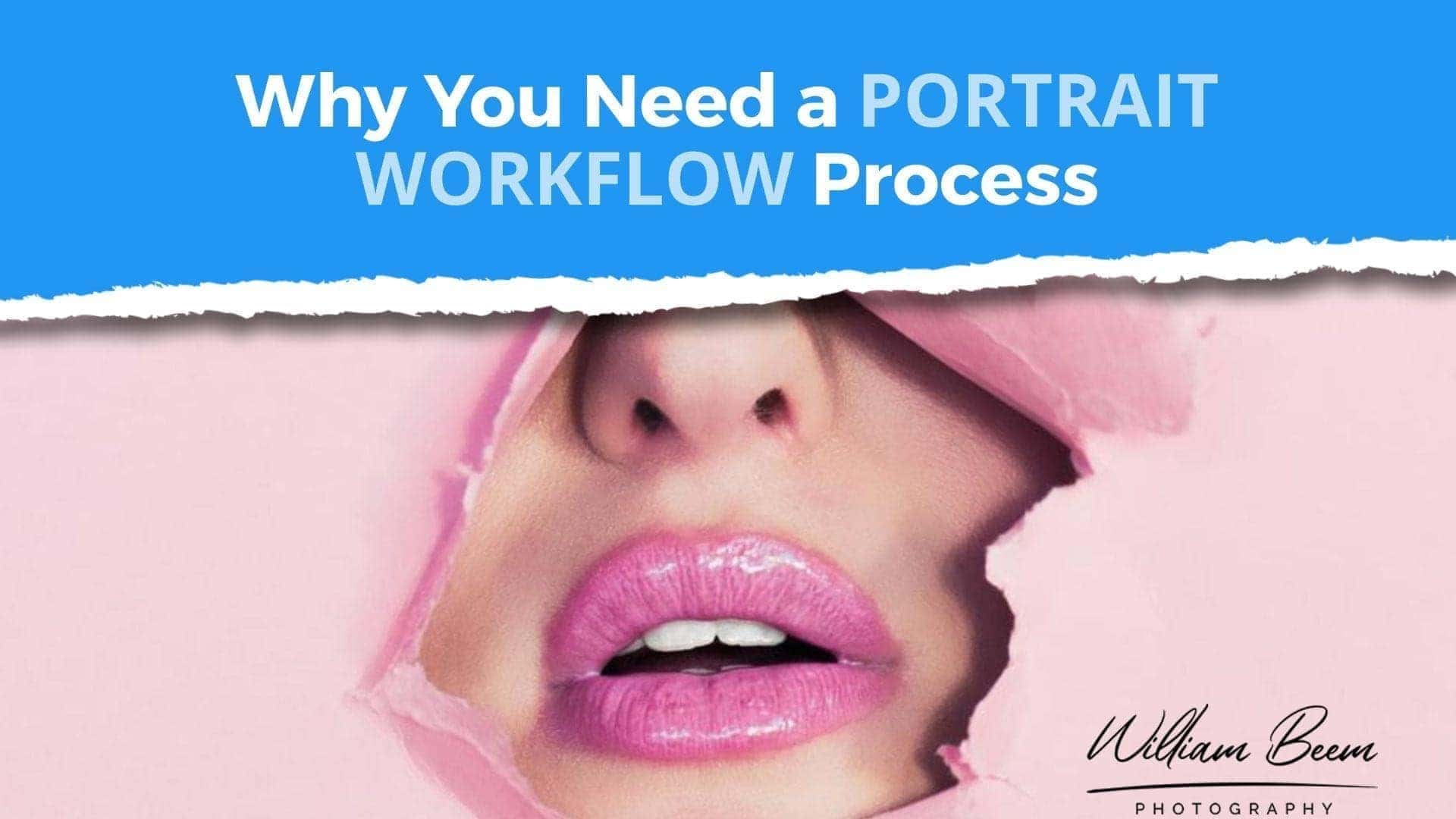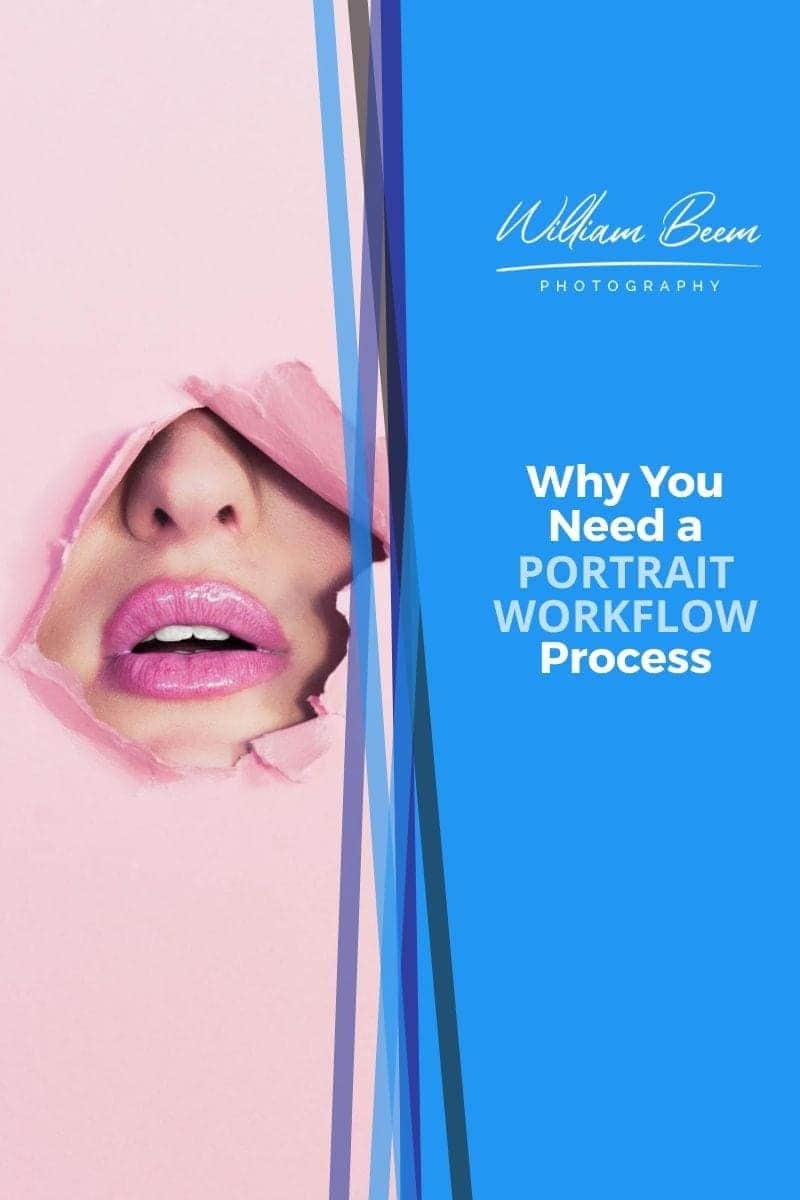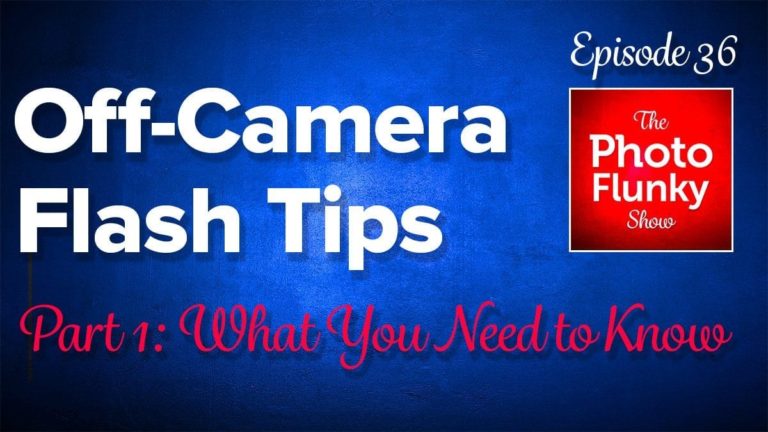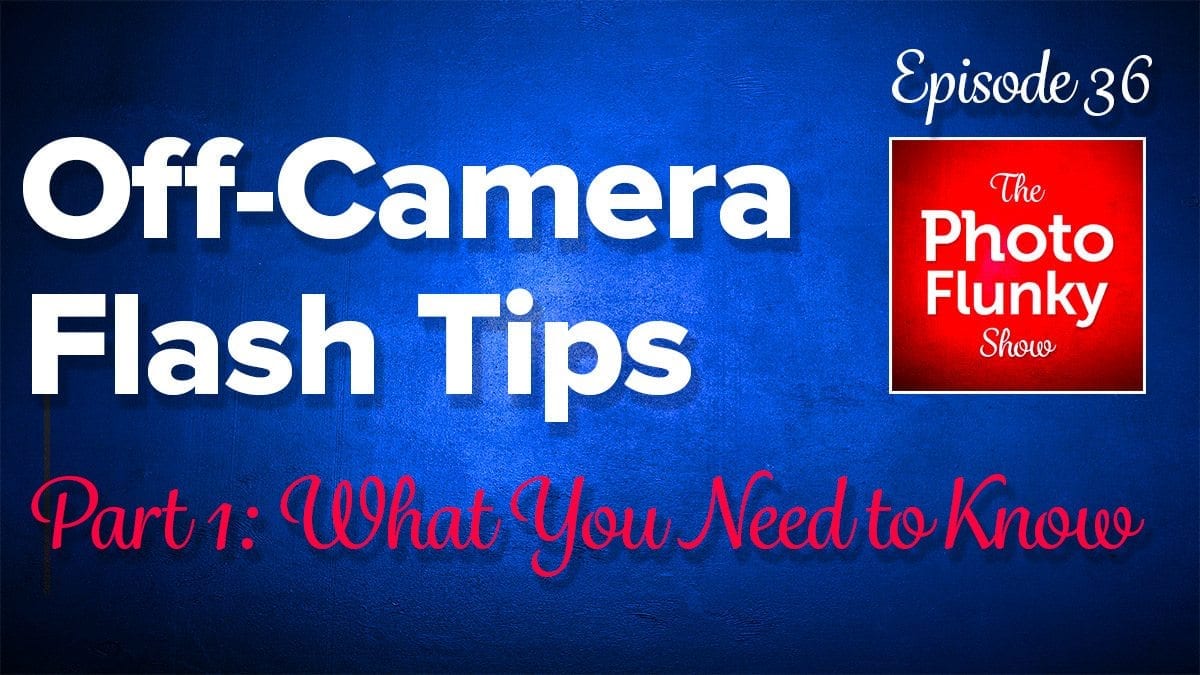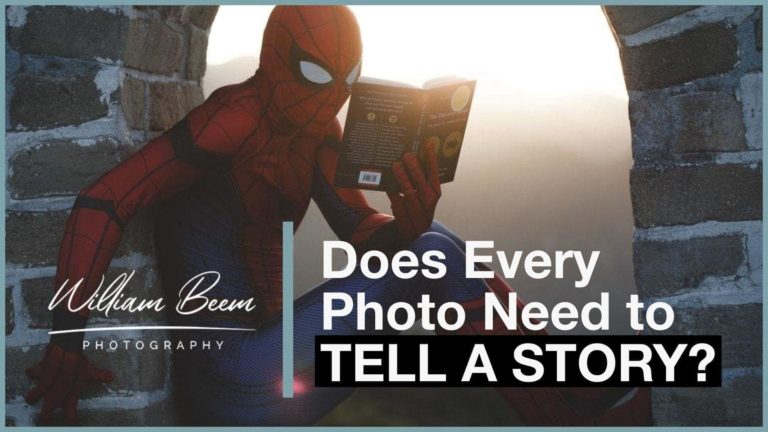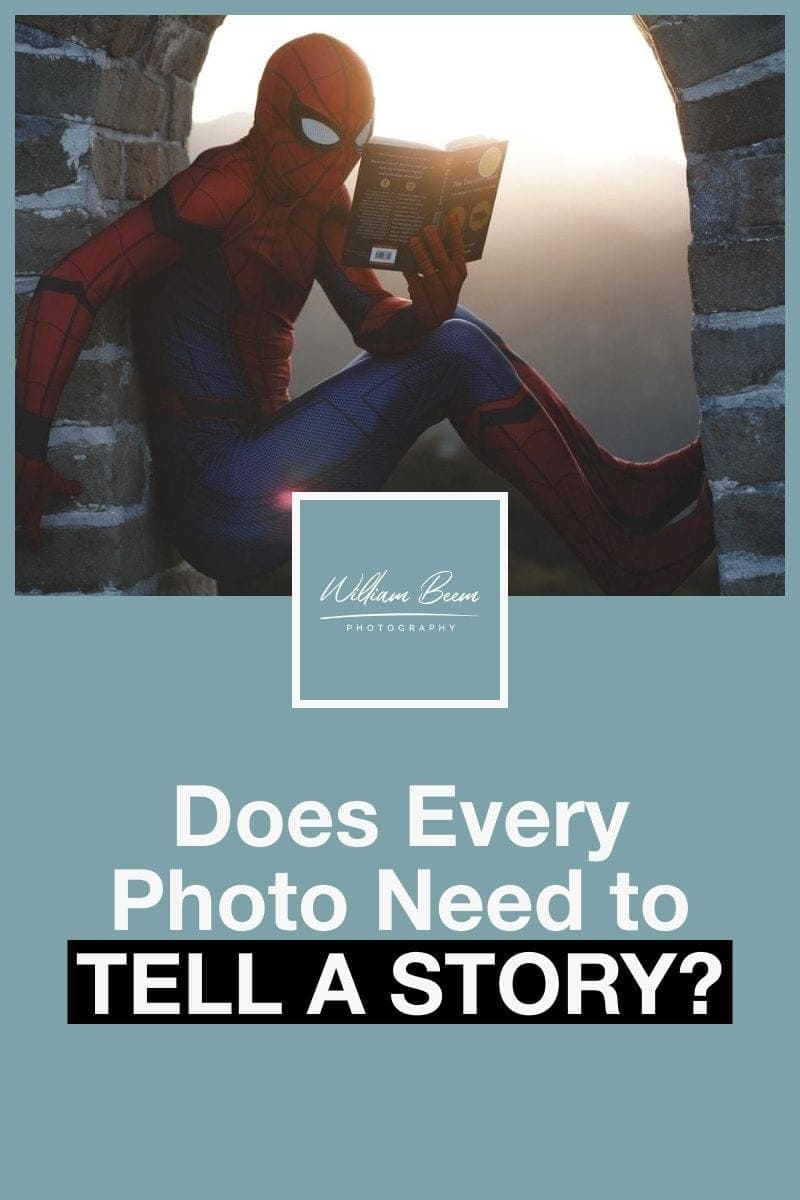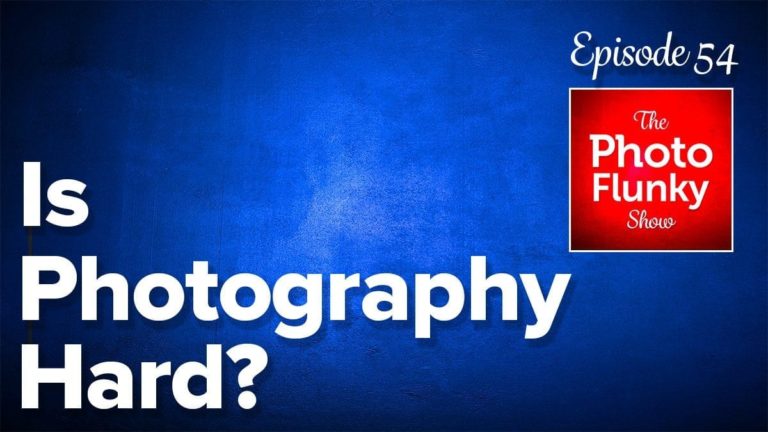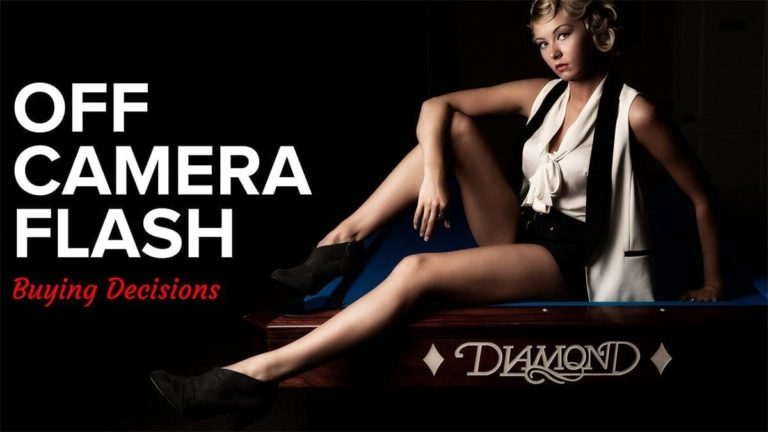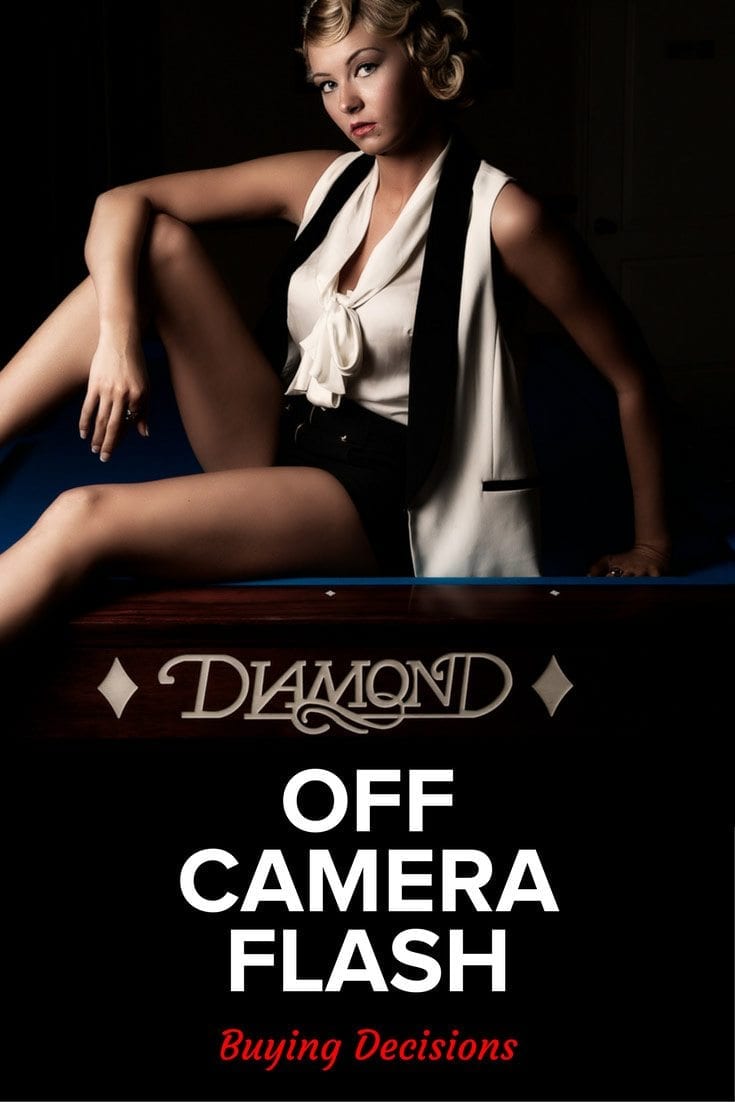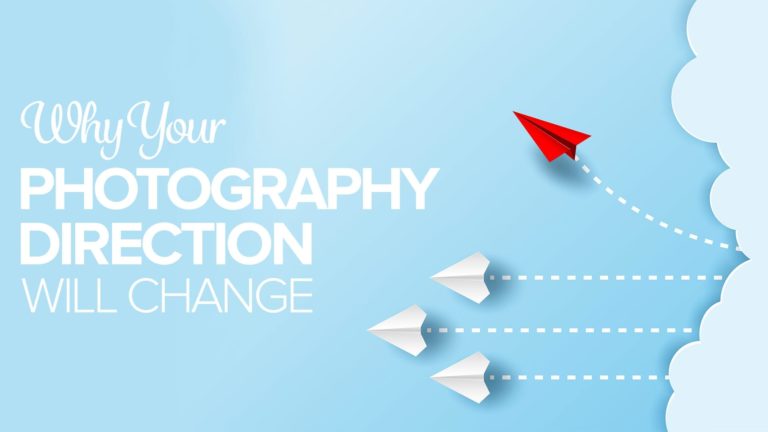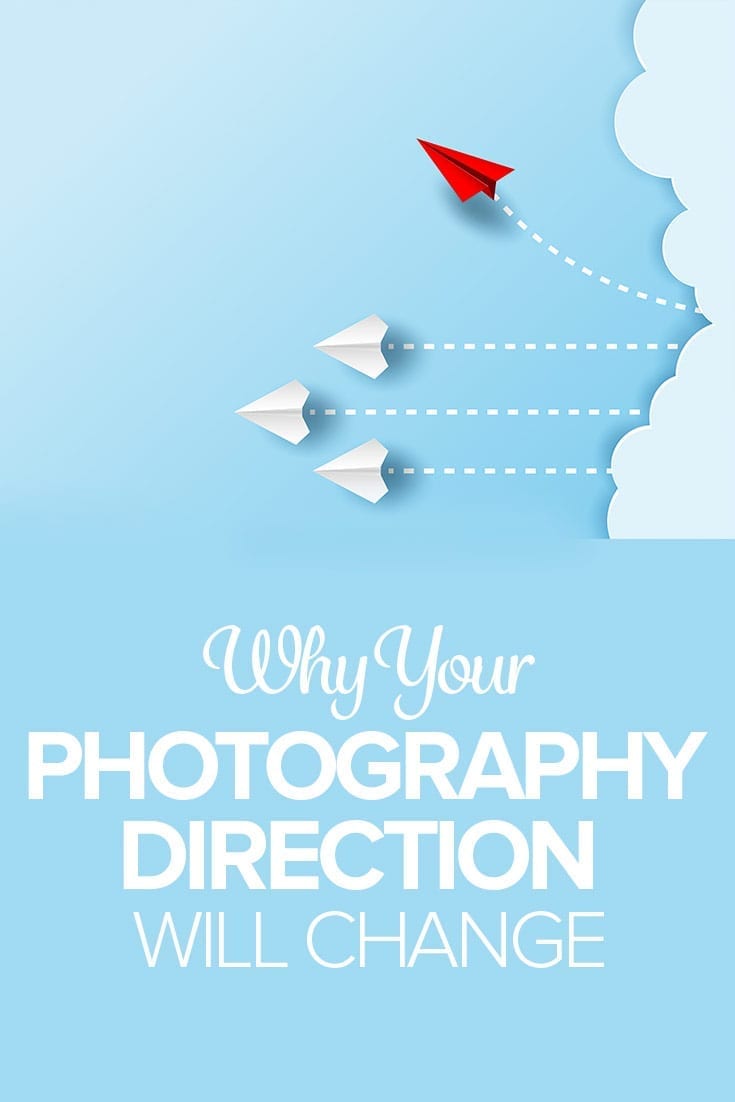Affiliate Disclosure: We earn a commission if you purchase through one of our links at no additional cost to you.
Before I developed a portrait workflow, I had pain. Mostly, a pain in the neck. That’s because I rushed into portrait photography. All excitement, no idea of what I wanted to accomplish.
The problem with that approach is that I often wasted time – both my own time and the subject’s time. We got some nice portraits now and then, but it was a gamble.
Fortunately, I found that the best way to create addictive, crave-worthy portraits is to slow down, make a plan, and get the results everyone wanted.
The Five Milestones of Portrait Workflow
Your portrait workflow should have have milestones mentioned here.
Within those milestones, you’re going to have plenty of actions. In fact, some of those actions may change from one portrait session to the next. That’s OK, because the key point of having a workflow means that you determine what you’re going to do and make a plan so you get the results you want.
The surprising fact is that organization is the best friend of creative endeavors. If you want to create something nice, it’s a good idea to know how to find your gear and have a portrait workflow or process to bring out your creative visions.
Develop Your Portrait Concept
A portrait concept is your vision of the resulting image from your portrait session. Creating a portrait concept allows you to foresee the needs of your portrait before you start taking photos.
Your portrait concept doesn’t have to be complex or it can be very elaborate. All you need to do is decide how your result should look before you start gathering people together to take photos. In fact, having a portrait concept helps you to plan who needs to participate in your portrait session.
Plan Your Portrait Session
Once you have your portrait concept in place, you can start to plan which people and elements you need to support your vision of the final result.
Some of the things you may need to consider when you plan your portrait session include:
These and many more issues are topics you need to consider so you can prepare for your portrait session and schedule the people and resources you need to bring your portrait concept to reality.
Execute Your Portrait Session
Executing a portrait session is much easier when you have a concept and a plan to achieve the results. That’s not to see you shouldn’t or won’t take spontaneous portraits if the opportunity arises.
Too many photographers tend to wing-it with their portrait sessions. Your odds of achieving a great portrait aren’t as great without some notion of what you want to achieve.
That’s not to say it’s impossible to get a great portrait from an ad-hoc session. It’s just that your possibilities are greater when you have a concept, you’ve planned to make it happen, and everyone understands what they’re trying to achieve.
Portrait Post-Production
Depending upon your portrait concept, your need for post-production may be simple or complex. You may be able to add some contrast and sharpness to achieve the result you desired.
On the other hand, some portraits have grand visions that may require some extensive post product to add composite photography into the scene.
Whatever your portrait concept, plan for your post processing to ensure you have the skills and tools to bring your vision to the level you expected.
There’s nothing wrong with hiring experienced retouchers to handle the post processing of your portraits, either.
Deliver Your Portraits
Your portrait session isn’t complete until you deliver the portraits to the people who matter.
That includes your subject and anyone who helped you create the portrait, too. Makeup artists, wardrobe stylists, photo assistants and set decorators also need to show off examples of their work. Make sure you know what photos they need.
Some people need prints. Others may need digital files in specific formats for use on a web site or social media. Be sure to find out what your team needs to you can deliver the right results to them.
Using a Portrait Workflow Reduces Stress and Anxiety
Showing up for a portrait session without a plan or knowing who will work with you can be stressful. You don’t know what’s expected and everyone looks at you for the answers.
We like to think of creativity just flowing, and that’s a nice concept. In fact, that’s how I advise people to come up with a concept. Let it all out. After that, get organized, plan and control your outcome.
The simple truth is that you need to be a director as much as a photographer.
That’s how you build something, and a portrait session is a lot like a construction plan.
Time Stamps
When I was growing up, I used to wing everything. And quite often I still do now, as Lee could probably tell you, but one of the things that my father was very adamant about was having a process. And I think that's because of his job. He used to work for a defense manufacturer. He worked in a department called planning and control.
In other words, you need to plan everything. You need to control everything in order to get the output that you wanted. And that's what we're going to talk about today. On I Like Your Picture. I'm William. Beem welcome to, I Like Your Picture. The show that helps you improve your photography with visual storytelling. What is visual? Storytelling is a method of approaching your photography with a knowledge of who you're trying to serve with your photos and what emotion you want to make them feel.
We encourage you to concentrate on your subject, light and background to create a photo your audience loves. I'm glad you found us. Hi, I'm William Beem. My name is Lee Beem. Well, that's nice. It is. Hey, today were going to be talking about why you need a process for your portrait sessions. We're going to talk about the pain of not having a process.
And then we're gonna kind of go over the five steps. Let's call them milestones of a portrait process. I know Lee has been really looking forward to this one because I mean, the reason I came up with this whole process in the first place is because I was making her miserable when we were taking portraits, either for her, for her business needs or for family portraits or something like that.
I'm going to let, Lee start off on this point. Why not having a process is painful? And for you, you don't really talk about it as the photographer, but more or less as the person working with me as a photographer when I didn't really have a plan. Yeah. But I just assumed that because I'm your wife, you abandoned a plan.
Didn't really get the impression that you never planned. And when you went out and took photos of other people, I had a semblance of a plan, but I will tell you right off the bat, I am guilty of, you know, getting my camera, knowing that I'm going to go take portraits and getting all excited. And then I get on the spot and I think,
okay, now what do I do? I did You plan things? You do plan like heavily plan over plan and over plan and change your plan and replan. You do a lot of like planning and having a concept. And there's, there's like a missing step. You see like where things are like 10 minutes before you have to leave. Yeah. And with my portrait photography for years,
I didn't have a good plan. It was literally like, Oh, you want to take pictures? That's great. Let's go off and take some pictures. Oh, where are we going to go? And my God, what are you wearing? Do you remember? Do you remember the time that we took some portraits of your coworker and she showed up with these thigh high socks?
Oh yeah. Our first off. I mean, people have different tastes. They understand if they like thigh high socks or if they don't like them, I'm not a fan of them, but this is something that the subject wanted to wear. The problem was thigh high socks leave marks on your skin. And she put them on, in the middle of the portrait session,
which meant that there were marks on her thighs and legs. When she, when she changed into some shorts, you know, without the socks later on, that's the kind of thing. If I had planned better and I've known what the wardrobe was going to be, we would have changed the order that we were going to be taking those photos. The other part of the plan that really didn't work out is she got a gym for us to take the portraits.
I mean, she was into her fitness and I thought, great, she's got a gym. And then we showed up and I thought, this is a mess. Yeah. We, I guess over there, if we were smart, we would have asked her to send pictures of the gym. First. It was very different to the types of gyms that we have in mind.
I mean, they had that place so crammed that people were, and it was quite big as well. The people were climbing over. Like you have to kind of step over one piece of equipment. The next one was right up against, Well, on top of that, all of the walls were lined with mirrors and fluorescent lights. And no matter where you looked,
it was difficult to find a way to take a portrait of somebody without either the lights being in the shot or some other person who was working out in the gym, because this was live. There was no special area for us, Or even your own reflection, like taking the pictures. And I was trying to work that out on the spot as I got there.
But I was also trying to figure out, I don't want to have a shot where it looks like there's a barbell from behind her coming through the center of her head. And literally these are things I was thinking about. And it's because I rushed into it. I didn't fully have a, a plan that said, okay, slow down, wait, let's plan.
What we're going to do. Let's go visit the site before we get in there. And all of these are things that I've kind of put into my portrait process since then. The result is I came back with a lot of photos that I really don't want to use. That's true. To me, that's really the pain that you get from not having a process is you just rush in there,
you click some shots and you don't really come up with what I would call a great photograph. Okay. But the most pain that you'll experience without having a process is when it comes to the part of finding pieces of equipment that are necessary for the shoot. And you don't know where they are, the pain in your ears from the commentary you're trying to find them. That's because it's a matter of organization.
And I've got my stuff in specific little drawers and they're organized and I'd need to put some labels. I have boxes. Now it's like a couple of weeks ago, maybe a week ago, I was on Lindsay Adler's forum and she asked of her group, Hey, does anybody here have advice on how to organize your gear and equipment? And a number of us were talking.
And I thought, you know, it really comes down to containers and labeling. Yes. There's different types of containers. There's different types of equipment that you need to store. And some of the folks who were on that thread put up a photographs of what they in their studio. And it looked really great. Oh, and one person said, wheels,
make sure that whatever you have on your containers has wheels. So you can move them about, Hey, see, as somebody who's moved house more times than I can count all my fingers and toes, I can tell you one of the best ways, if you have a lot of stuff is to actually keep yourself in inventory, do it in a spreadsheet in your computer.
Just make a note, what item is in what box and then label the boxes like with letter like A through Z or whatever you might want to do a more, maybe a is all the lighting stuff. So A1, A2, A3. But that way you just go off and you go, okay, I know it's in this box because looking through a list of things on each box and unstacking them,
if you've got a lot of stuff and then having to stack back, because it wasn't, that one is pretty painful. Well, and I'm not there yet. One of these boxes says cables that, okay, I've had cables in there and I differentiate, I've got ethernet cables here. I've got USB cables there and various other cables in different boxes.
And gallon ziplock bags are awesome for that. Yeah, they really are. But that was the whole thing is as part of your process, I would say is knowing where your stuff is, because as Lee will tell you, I will stomp around here thinking I know where something is. And then when I find out it's not there, I honestly believe it's because she moved.
It is then I start descriptive phrases. Yes. It's quite descriptive. But I mean, you need, you do want to know where your stuff is. Cause maybe you end up with a surprise shoot or something at short notice, and you've just come back from one. So you may be part unpacked or, you know, not quite unpacked and you need to switch some things out.
It just makes it so much easier if you know, if you can quickly put things away and put them back again. Now that we've talked about some of the pain, I kind of want to talk about the benefits of having a portrait session process. That is, you know what you're doing, you know what you're expecting and you know how to do it.
Yep. And so does everybody else who's working with you or for you. I would say there's, there's a couple of big benefits that I see out of having a process. One is you're much more relaxed. You're not angry. You're not surprised. You're not confused. You know what you need to do and you know what order you need to do it.
And also, you know, what problems to look out for. It also gives a much better and much more efficient workflow. It, it really does. The other benefit is the one that Lee kind of brought up is... you're not freaking out the people that are working with you. And matter of fact, you might impress them. If you look like, you know what you're doing,
because you have a process. And if you don't, pretend. Because people, if you're in charge, no matter what you are doing, if people are looking to you to tie things together, they're watching you and they're going to feed off your energy. You get stressed, they get stressed. So let's take an example of a portrait session where we more or less had things together.
I was still kind of putting this process together, but Lee needed something for one of her websites and we needed to do, basically your stuff was about running and you had a plethora of shoes, but you had more, but you kind of had an idea of what you wanted to do. And then it really started with that. We started with a concept.
We didn't just show up and say, okay, let's take pictures today. What do you want to do? I don't know. What do you want to do? Yep. If I'm having photos taken, I usually know what I want. And I think what may be a little more difficult for you. I think when your subject has the concept in mind,
it is a little different. I think it gives you an alternate kind of a challenge because I can see what I went in my head. Also. I am very much a "wing it" person when it comes to doing photography. So I know what type of photos I want, but I'm usually pretty flexible on, well, let's try this and let's try this.
I've got a general idea of what I want. I think that first off the concept is important. I don't, I don't really care who comes up with the concept, but you need to be able to describe it and make sure that everybody who's working with you and it could be just you as a photographer and your subject, or maybe you've got other people on there that are helping out with wardrobe or styling or an assistant whoever's involved with the portrait session.
I think that everybody needs to understand what they're after, because if you don't have at least a good ballpark vision of that, you're not going to get there. So you had your concept and you were able to describe it to me in enough detail that we knew what pieces we needed to get started. Yep. I think we had to jiggle around with the composition,
a little. We had to jiggle around with the composition. Also we did this as a composite photo. So in other words, we shot you on a gray screen and then I composited you on a background that we chose. Yeah. For the, for the, um, the photos of me without the shoes, the ones with the shoes we actually wanted on the background.
Yeah. But those are things that we knew in the concept before we got there. So, so the next, um, that's really, the first milestone is coming up with the concept, make sure that he knows it. Next one is planning. I said, okay, you know what you want to do now, you're gonna figure out how you're going to make it happen.
And part of that was like we said, okay, we don't have the background that we want for some of the shots, but we can composite that. Then it was just a matter of going off and searching and finding a background that was suitable. And I'll leave that to you. You did. But also I came back to you and said, do you like this?
Or do you like this? And you ultimately picked the one that you decided on was, Yeah, that's a good example of working. If you're delivering photos to somebody which hopefully you are working with them to make sure that you're both on the same page as to what they want. Right now in this planning stage, let's go back to the problem portrait session that I mentioned before.
This is where you go look at your scene or your background, whatever it is or wherever it is that you're going to be taking your photographs before you have the day that you scheduled your execution of the portrait session. You want to go look at the place where you're going to be shooting. You want to make sure you've got access, but also you don't want to just wing it and trust that someone else had a good idea of what you needed. To be fair to our subject,
we told her we needed a gym. This was her idea of a gym, but she wasn't thinking as a photographer, as a photographer, right. I kind of like having clean sets. I want elements that inform you that this is a gym or a place to work out, but there were so many distracting elements. And I swear to God, the average person doesn't even think about the distractions that are around them or behind them when they're taking photographs.
They don't. But then again, it's like I said to you at the time, look at what she wanted. She was thrilled with those photos. She doesn't critique photos like a photographer. When she's looking at the photo, all she's looking at is herself. People who are looking at her, that's all I see. She didn't care about the gym equipment in the background because to her it's like,
it's a gym. You're looking from a photographer's perspective and going, well, this is a distraction. That's a distraction. She didn't even see that stuff. I walked in the door and I thought, Oh, hell, she walked in the door and think, okay, let's get some pictures. See how they look. And you're right at the end of it,
she says, I paid hundreds of dollars to other photographers. And haven't gotten anything near the quality of what I just gave her for free. And we did this for free because you know, this is a coworker of yours and we were helping her out. And also I was looking for some portraits of my own. I didn't get anything I could use at least nothing that I really wanted to share.
I did a, I did a blog post. We talked about this on a previous podcast and I'll link that in the show notes. But quite honestly, these are not things that would put my portfolio. No. And she was in great shape. This was just before a competition. She's probably in the best shape that she's going to be, but I just looked at everything else.
And I thought, Oh, no. As far as your planning though, this is where I would have liked to have known what is she going to wear? If I had known about those thigh high socks in the different outfits she was going to change into, I would've definitely put those socks as the last thing, because she never thought about the fact that that made lines on her legs.
And she even asked me, okay, can you Photoshop that out? I thought, well, I can, but it's not worth my time on a free shoe. And that's the thing that you need to keep in mind. It's not that your subject or your model is being dumb or anything. People have been kind of accustomed to hearing, Oh, when there's a mistake,
they think that there's this magic wand you click, if you have Photoshop and it just makes all the bad stuff go away. So this is people's perception of it. If they're not into photography, you cannot expect them to know. Yeah, they, they hear Photoshop and they just think, Oh, push a button. And it'll take care of that with the work that was on her legs,
with those patterns, from the thigh high socks, it would have taken a while to get over that. And it just, at least to my satisfaction anyways. For planning, it's like, what kind of photographs am I going to be taking? What's the location, go visit it. Make sure there no deal breakers there, which this site definitely had. Look at the wardrobe and basically anything
that's going to be an element in your photograph. You kind of want to know before you get there. You want to know, does it support your concept? Is it something you can work with? I mean, if you've got your subject sitting with a frosty drink and you want to bit of condensation on the glass, if that's part of your, you're scene that you're doing,
you got to make sure that you've got that that fast or whatever it is, you know, whatever the prop is, it's gotta be set and ready to go. Cause there are certain things where you've got a matter of seconds before they start to deteriorate in appearance. And those all little things, those, those are the details you need to consider. Part of planning is making sure if this is not your place,
do you have access to where you're going to be? And do you have the phone number or contact information for the person that's going to give you access just in case you show up and they're not there or worse yet someone else is there and they haven't left. Also, if this is going to be a long thing, do you need to plan for refreshments?
I mean, do you need drinks? Do you need snacks? Are you providing lunch? Are there restrooms somewhere to change? Definitely. Are there restrooms? Is there electricity in case you need to plug something in. All that stuff fits into your planning. I've been working on these guides that I'm talking about for all these different milestones. And it's much more, we can go into an one podcast episode.
Basically planning is the milestone where you want to think of everything that could potentially go wrong and then make sure that you have a plan in case something happens even to something as simple as somebody doesn't have a ride to get there. Yeah. You've had that one before. I've had that a couple of times before. I've had paid models who were supposed to show up someplace and there's a team of people waiting and they slept in and said,
you know, I just don't feel like doing the shoot today. And they were also supposed to be the person driving another model to the site. Who did want to come. All right. So we get to execution day and then this kind of thing flies up in our face. You can't help that if people are irresponsible, they're going to be irresponsible.
Then you've got to figure out you show them the place you guarantee you have access. I like to do something even before that. Now I like to call everybody up before I go out and say, Hey, are you still good? You have a ride. Can you get there? Because if a key person can't get there and you can't make a accommodations,
then let's call everybody else and just say, look, it's not going to happen today. That's kind of like, what I do at the beginning is I make these phone calls. I want to check with people said, can you show up? Do you need a ride? Sometimes you can juggle it and say, okay, so, and so was near you.
Let me see if they can swing over, pick you up and bring you in. And then we'll make sure you have a ride home as well. Yes, it's strange. But this is where I've talked about this before. You're not just a photographer. You're not even just a director. You're also a producer. And these are the kinds of things producers have to figure out is, how does everything come together to support the creative vision and the creative people that are on the set so that they can do what they do best? Basically with the execution.
Here's my thought on this. And it's kind of like what we've mentioned on travel photography before, too. Get the shots that are in your concept, then go look for other opportunities. I never want to say or suggest that you have to be so rigid with your planning and execution, that you're only going to do one photograph. I'd go into something saying, this is the photograph I'm going to get,
but I'm not going to yeah. Then I'm going to play. I'm going to see, can we get something else? But I'm like, I want to get the shot, but I need to get, and that shot may be a couple of different versions. So for example, maybe the, if you have a person who's providing wardrobe and styling, what they need may be different than what your model needs.
And that may be different than what your hair and makeup artist needs. You want to understand that's part of your planning. You want to understand all those things. And then when you execute, you got that shot list. You go work those things out. As part of your execution, you got to keep in mind, human nature. People may start off a little bit cold on set when you're taking the photographs and then they kind of warm up and get into it.
So you're going to think about what you want later on when you're going through your post-processing is like, what kind of images are you going to keep? And what are you going to throw out? It doesn't mean you don't take the photos because that's part of helping somebody warm up, but you need to take a look like, okay, if someone's energy in this,
are they comfortable in front of the camera? Are they confident in front of the camera? And are you getting, do you have problems with the wardrobe on set you, if you can't look close enough yourself, it's nice to have someone beside you that can keep an eye on. Is the hair getting out of the, you know, the way it should be? Is the wardrobe bunching up and needs to be corrected?
So when you're going through execution, you're really looking at all those things so that you get the shot while you're there before you start going into, okay, let's play. It's really a good idea if it's, if it's possible to have something tethered. So that way, when you get with your team, you review the shots on a larger screen, like your laptop,
or maybe an iPad. If you have a wireless thing. So you can see things in better detail than you do on the back of a screen. Like I said, once you're done with that execution, go ahead and be creative. You know, change your angle, change your lighting, change your wardrobe, whatever you want to do, have some fun with it.
But you kind of get to that point after you've, after you know that you've got what you came there for. That sound good. Do you Lee? Yes it does. You want to make commitments to the people around you and give them a timeframe when they should expect delivery. Yes. That's in case you haven't done this before, but basically it's going to take you time to load the photos.
You're going to go edit the process, but basically you're going to throw out the ones that don't really work to get down to the ones that you're gonna do. Your post-processing, you know, which ones that you're going to have to deliver to the different people on your team, assuming you, as you're working with the team, at least you've got the subject that you're going to deliver to.
You want to let them know then and there before they go, this is how long it's going to take me before you get results. Because that will save you a lot of, Hey, are you done yet? Can I see my pictures? Just kind of set, expectations. If it takes you two weeks, it takes you two weeks and let them know.
Communication is really a key thing throughout this entire process. Lee's really big on communication. I am. If people keep me updated, I can give them so much grace. It's when there is silence, I gets a little bit testy pretty quickly. When I get ignored, when I reach out and I don't hear anything, or if there's just no response,
no kind of communication. When I was told that there was going to be some, I've got a little bit of a short fuse without my, my grace period for that is very close to zero, Yeah. Other people will be the same way. It's like you took my time. We go out and we do this portrait shoot. Even if you're paying somebody,
they still expect to have copy of it. Cause they need to show their work for their business. That's why they showed up in the first place. They need the photos. Even if you're paying them as a model, they need the photos that they can put it in their own portfolio, if it's good enough or their social media, whatever it is,
because they want to tell their audience what they were doing. Communicate, let them know what it's going to come. When you go to your post-processing, this is the fourth milestone. You're really going to come into. I'd call it three phases. You're going to edit your photos. And by that, I mean, get rid of the weak ones until you get down to the strongest ones.
Edit is basically eliminating things. It's not a matter of doing the post-processing. Editing, whittling it down. You're going to get down to just, these are the strong ones and we'll go over, you know, at another time, what you look for when you're editing. But basically the idea is you're looking for the strongest photos and the ones that aren't strongest photos.
Aren't the strongest photos. There's no point in keeping them around. I wouldn't delete everything. I would just say, they're not part of your final collection that you're going to have. You might delete them later if you never go back and use them, but don't delete them just yet. Because every once in a while you remember, Oh, I forgot that I needed to give the wardrobe,
stylist this, and then you have to go back and find that one again. Yeah. Makes it easier. After you've gotten down to your final cuts, I would say the next two stages are, you're going to clean everything up in your post processing. In other words, if you have to go in and do some healing or cloning, things like that,
if you're going to work on your, I call it texture, tone and color. And I'm not the one who invented that order, but it really does work out very well. If I'm looking at the texture, I'm looking at things where I use the healing brush. I'm going to crop the photo to the way that I want it to be, because there's no point in using the healing brush on areas of the photo that I'm going to crop out later.
Exactly. All that stuff happens. Then I've got a checklist of this order that I use in Lightroom and you can also adapt it to Photoshop or other tools. So if you want go to Williambeem.com/lrchecklist, and I'll have a link in the show notes for it. And then we'll just kind of show you the order that I like to do Post-processing. After you've done the texture stuff,
then you do the tonal contrast and the tone. So in other words, what's the balance of highlights and shadows. Some people like a lot of contrast, some people like flat looking kind of images or somewhere in between, and this is your need or taste. So you go ahead and do that. And then finally I work on the color. I will go in there and adjust colors individually if I need.
And at the end of it, I'm going to put over some kind of a global color cast to unify everything. In other words, the, the light needs to look like all the different pieces belong together. As you're working through the process. If you don't do that, particularly with composite photos, if, if they don't look like they all belong,
it won't work for the human eye. It doesn't matter. Even if you put the ugliest color cast over it, I swear that the human brain will accept a hideous green or pink color cast over all of your photos. So long as everything makes sense to it. Is that okay? It's not real, but it makes sense. If you go in there and you've got different colors of lighting on things that don't make sense,
like they were taken at different times and angles that doesn't make sense. The mind is just going to say fake photo, next. Yeah. They don't think it's a conscious thing. I think people instinctively just something feels strange, even if they not thinking of it. It's, you know, it's what I remember from, I was watching this documentary on Las Vegas security and the people who are looking through the cameras have this little phrase,
J D L R just don't look. Right? Yeah. And they trust that instinct. They may not know why it doesn't look right, but they figure, if it, if it doesn't look right, we need to investigate further in their case. Well, the people who are looking at your photographs won't investigate further. They'll just throw it like fake bad.
This one sucks. Actually the ones you have to worry about the most are the ones who do, because they'll sit there and nitpick and they'll probably going share it somewhere and say something. Those will be other photographers who put your stuff up on Photoshop Disasters. Like why are there six fingers on his hand? It's not where you want to get your celebrity moments.
The last milestone is delivery. This is the promise that you made. The delivery. How long it takes. Really depends on how you're delivering. If someone just wants some JPEGs, you can do that much faster. Once you're done with the post processing, you crop it. You're able to email that off. But if you're printing, man, you've got a lot of options.
This is going to be just a paper print? Is it going to be a metallic thing? Is it going to be canvas? Acrylic? Whatever it is that you want to share. And that really depends on how much you value the photo and or the person that you're maybe selling it to or providing a form values. This is where you can really shine with your communication before you deliver.
If you're going to have a big framed prints done, you've obviously got to organize that through whatever your company of choice is. This is a good time. Once you've kind of confirmed the order, you contact the people who are waiting for the, or the person waiting for the photo and you let them know, order went in today. They have given an estimated delivery time of this.
I'll keep you updated. Give them like, I'd say like every just depends. How long if it's over two weeks, I'd say every five days or so you want to kind of just let them know I'm still on this. This is where we are so far, we're on track or it looks like it's a day or two behind. And the, and that's important at the time that we're recording this it's July 2020.
People still have delayed shipments because of the lockdown and the virus and all those other things, then that may affect your ability to deliver, because you may be waiting on another shop that just isn't able to get the work done because they can't get the materials. You may be waiting on delivery from USPS or FedEx or UPS because you know, they're also having manpower issues.
There's all sorts of problems with delivery issues going on right now. So you want to set those expectations. And as, and as Lee said, you want to communicate. If you find out something's wrong. But when we're talking about what you deliver, wedding are really great at doing this. At least the good ones are because in the planning stages, they'll show you,
okay. These are the types of albums that I have. These are the types of frames that I have, or have access to. And you kind of make those decisions before you ever photograph anything. You sit down with a client and you say, what result do you want? And you think about the frames. Frames can be very expensive and not everybody can afford the frame that maybe they really want.
It depends on situations, but the frame that you select almost tells you about how much you value the portrait that's inside, which is why when I got the wedding portrait for Lee and I, I got the fancy gilded gold frame. It's beautiful. Yeah. I knew she was going to like that one. And you know, not every photo needs like a big ornate golden frame.
It's not appropriate. I think for every photo, well that's was wedding. Yeah. But other circumstances, I've, I've got some things in my office with just have plain black frames and that's fine. Because the idea is not for the frame to overtake what's inside. It is just simply to say, okay, here's the border. Don't let anything spill out of the edge.
Yes. And those are the five milestones. So what I'm really wanting to share is you really need to have a process for your portrait sessions. It will save you a lot of pain. And the five milestones that you want to think about are your concept, your planning, the execution, post-processing and delivery. So I hope that it was helpful to you.
And we'll, we'll see you again next week. Hey, thank you so much for joining us on. I Like Your Picture. Show notes are going to be available at williambeem.com/episode225. So what did I say? I was going to promise them I was going to have a link to the portrait shoots, where we were in that ugly gym and a link to the,
basically the checklist for the Lightroom stuff, a little workflow and other things. So, you know, kind of what order to do texture, tone and color. So yeah, I had to say that so I can remind myself when I'm editing this later on. So I know what to put in the show notes. Thanks so much. We'll see you again next week.

